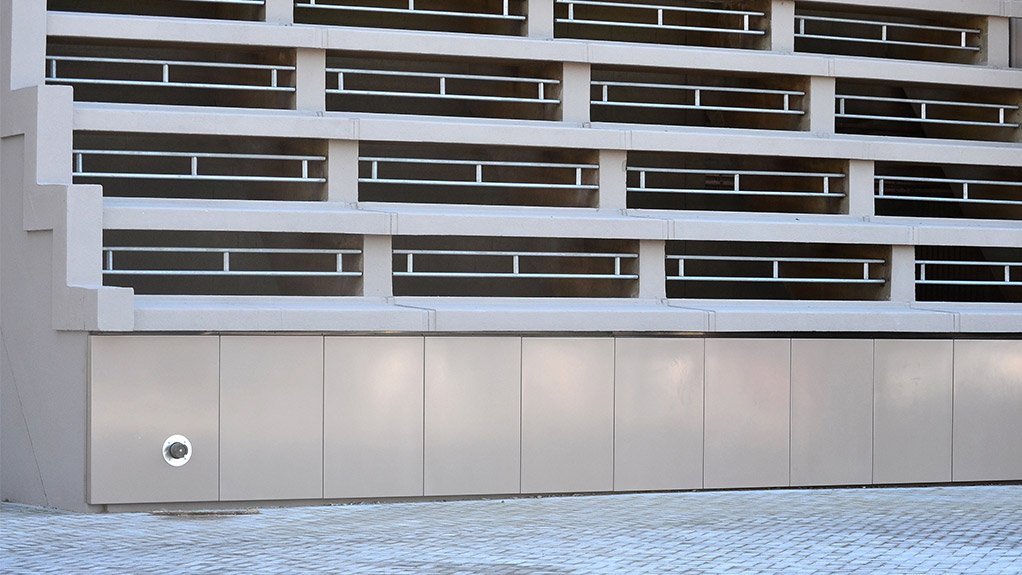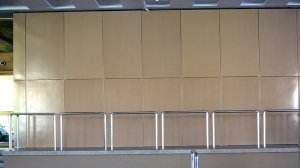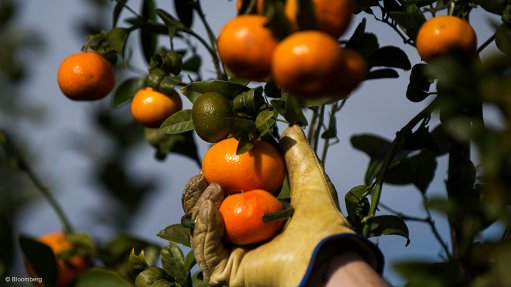SA vitreous enamel steel cladding panels used internationally



CLADDING FOR CAPE TOWNThe Cape Town Civic Centre project required the installation of about 400 m2 of Vitraclad cladding around the entrances and across the lower levels of the building
VITREOUS ENAMEL STEEL CLADDINGVitrex manufactures the Vitraclad range of cladding at its Boksburg plant, in Jet Park, Gauteng
South Africa-based vitreous enamel-product manufacturer Vitrex is supplying projects in the Sultanate of Oman, in Asia, and in the UK with its Vitraclad panels.
The company’s most recent local project was in April 2012, when it supplied Vitraclad vitreous enamel steel cladding panels for the refurbishment of the external façade of the Cape Town Civic Centre, in the city’s central business district, Vitrex sales and marketing director Cristian Cottino tells Engineering News.
Vitrex manufactures the Vitraclad range of cladding at its Boksburg plant, in Jet Park, Gauteng.
Cottino says the project was undertaken by Vitrex’s Western Cape agents, Façade Projects, and required the installation of about 400 m2 of Vitraclad cladding around the entrances and across the lower levels of the building, which are areas that are subjected to vehicular and pedestrian traffic.
Cottino says Vitrex manufactured the complete system, which consisted of heavy-gauge panels, substructure, brackets, fixings and trims, specifically for the project.
Further, he notes the Cape Town Civic Centre project used the VitraWall system, which consists of heavy-gauge Vitraclad panels, secured by means of hook-on brackets to the bespoke and slotted vertical structures.
“The slotted vertical structures enable installers to make adjustments during the installation,” he explains.
Cottino says the VitraWall system was designed to provide a more cost-effective cladding solution for internal and external applications while simultaneously reducing the overall depth of the cladding system, relative to the outer line of the structure.
“The installation at the Cape Town Civic Centre was a milestone in Vitrex’s history, as the first-ever Vitraclad cladding installation took place in Cape Town in 1959 using vitreous enamel steel-façade cladding for what was then the African Life Building. Since then, Vitraclad cladding has been manufactured according to client specifications and installed at several high-profile projects locally and abroad,” he notes.
Other local steel-cladding projects in which Vitrex was involved during the past two years include banking firm Absa Bank’s Clearwater Mall branch, in Johannesburg, State-owned power utility Eskom’s Medupi coal-fired station, the new dry-cooled coal-fired power station being built by Eskom near Lephalale, in Limpopo, and energy and chemicals company Sasol’s filling station in Klerksdorp, in the North West.
“The enamel finish and durability of the Vitraclad panels are the result of three layers of glass being fused to enamelling-quality sheet steel at temperatures of about 800 °C,” Cottino explains, adding that Vitraclad panels are available in various colours and offer advantages such as colour fastness and a hygienic surface, as well as resistance to abrasion, corrosion, vandalism, chemicals, fire, heat and thermal shock.
“The panels can be used to provide acoustic and thermal insulation, have excellent dielectric properties, are easy to clean and require limited maintenance,” Cottino adds.
Vitraclad panels are also fully recyclable, which prevents material wastage, he says.
Technical Data
Cottino says the company manufactures three basic Vitraclad panel types for architectural purposes.
The Vitraclad light-gauge panels (C-Type or composite panel) was originally designed as an infill panel and is also used in internal cladding and external fascia applications, he explains.
“Light-gauge panels have a flush edge, necessitating the introduction of extrusion edge covers and joint profiles. In addition, a one-quarter-round aluminum extrusion is also used to create 90˚ returns,” says Cottino, adding that the thickness of the enamelling-quality steel is 0.7 mm.
Light-gauge panels are available in standard (noninsulated) and insulated options.
The heavy-gauge panels (F-Type or flanged panel) are used to create more complex profiles that include curves, corners and flat profiles. These panels are prefabricated to the required size and shape by cutting and notching steel sheets, bending the returns and flanges, and welding, finishing off and testing the corners prior to enameling.
Moreover, he notes that these panels have an integral return flange around the full perimeter of the panel and, although the flange depth can vary as a function of the panel size, it is considered good enameling practice to use a single flange return depth of 35 mm to 40 mm or, preferably, a double flange return combination of 35 mm to 40 mm, plus 20 mm.
“The thickness of the enamelling-quality steel is 1.5 mm and several fixing and joint details are offered to the designer, depending on the application and aesthetic parameters,” Cottino states, adding that Vitraclad heavy-gauge panels are also available in standard (noninsulated) and insulated options.
He explains that the heavy-gauge sheets are used principally in the lining of vehicular tunnels and curved soffits.
Cottino points out that the enamel steel sheets have a flush edge and firing holes are present to provide support points during the enamelling process. Extrusion edge covers are, therefore, required at the joints and ter-minal ends.
However, he says Vitrex can also supply enamelled sheets without firing holes using microtags to provide support points during the firing process.
Cottino says the thickness of the enamel- ling-quality steel for these sheets includes 1.5 mm, 2 mm and 2.5 mm, depending on the application.
“Vitraclad panels are manufactured with a maximum face width of 1 200 mm on single- return-flange heavy-gauge panels and heavy-gauge sheets or
with a face width of 1 150 mm on double-return-flange heavy-gauge panels and light-gauge panels,” he highlights.
The maximum length of all panels and sheets is 3 000 mm; however, the recommended maximum panel and sheet length is 2 400 mm.
“Steel-sheet sizes, furnace aperture and panel shape can also limit the final panel dimensions and it is always advisable to involve Vitrex as early as possible at the design stage of a project,” Cottino stresses.
Vitraclad panels and sheets are manufactured in accordance with ISO 28722:2011.
Comments
Announcements
What's On
Subscribe to improve your user experience...
Option 1 (equivalent of R125 a month):
Receive a weekly copy of Creamer Media's Engineering News & Mining Weekly magazine
(print copy for those in South Africa and e-magazine for those outside of South Africa)
Receive daily email newsletters
Access to full search results
Access archive of magazine back copies
Access to Projects in Progress
Access to ONE Research Report of your choice in PDF format
Option 2 (equivalent of R375 a month):
All benefits from Option 1
PLUS
Access to Creamer Media's Research Channel Africa for ALL Research Reports, in PDF format, on various industrial and mining sectors
including Electricity; Water; Energy Transition; Hydrogen; Roads, Rail and Ports; Coal; Gold; Platinum; Battery Metals; etc.
Already a subscriber?
Forgotten your password?
Receive weekly copy of Creamer Media's Engineering News & Mining Weekly magazine (print copy for those in South Africa and e-magazine for those outside of South Africa)
➕
Recieve daily email newsletters
➕
Access to full search results
➕
Access archive of magazine back copies
➕
Access to Projects in Progress
➕
Access to ONE Research Report of your choice in PDF format
RESEARCH CHANNEL AFRICA
R4500 (equivalent of R375 a month)
SUBSCRIBEAll benefits from Option 1
➕
Access to Creamer Media's Research Channel Africa for ALL Research Reports on various industrial and mining sectors, in PDF format, including on:
Electricity
➕
Water
➕
Energy Transition
➕
Hydrogen
➕
Roads, Rail and Ports
➕
Coal
➕
Gold
➕
Platinum
➕
Battery Metals
➕
etc.
Receive all benefits from Option 1 or Option 2 delivered to numerous people at your company
➕
Multiple User names and Passwords for simultaneous log-ins
➕
Intranet integration access to all in your organisation




















